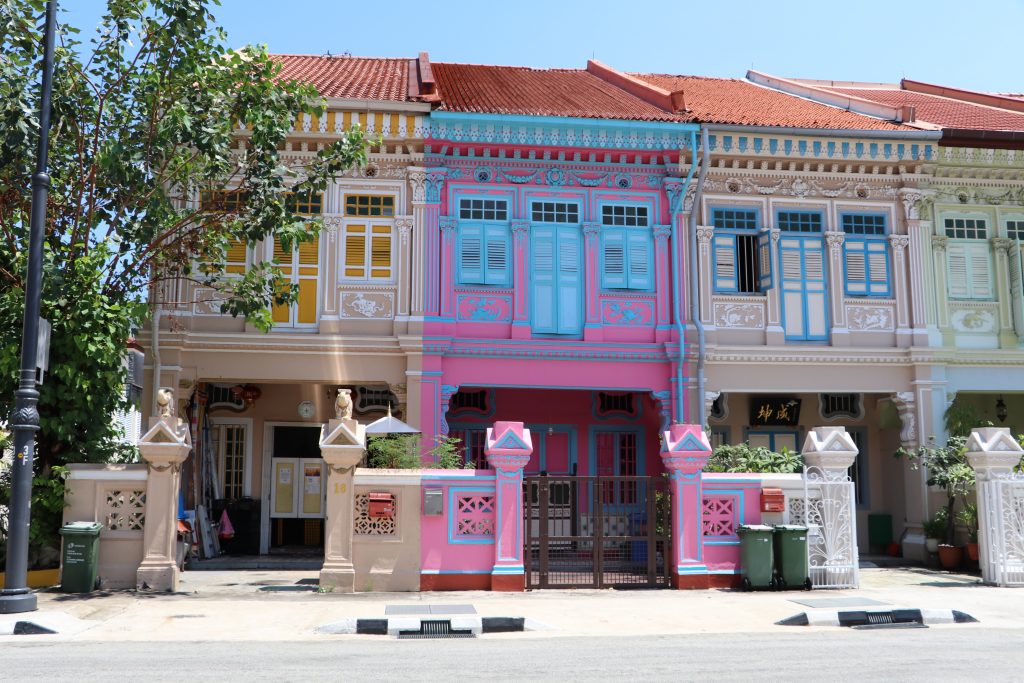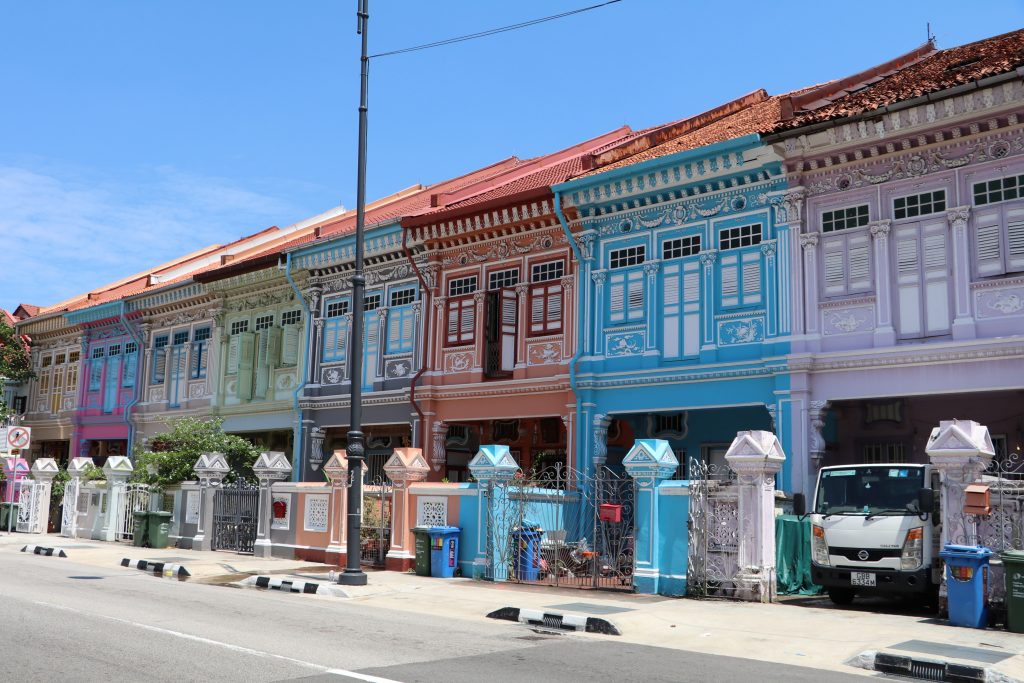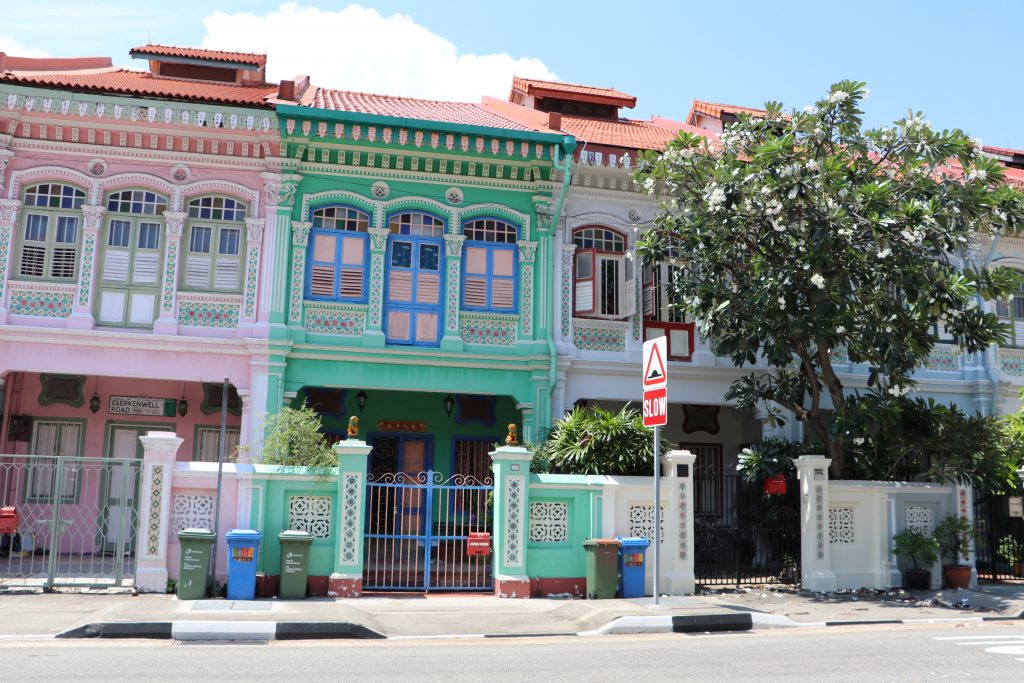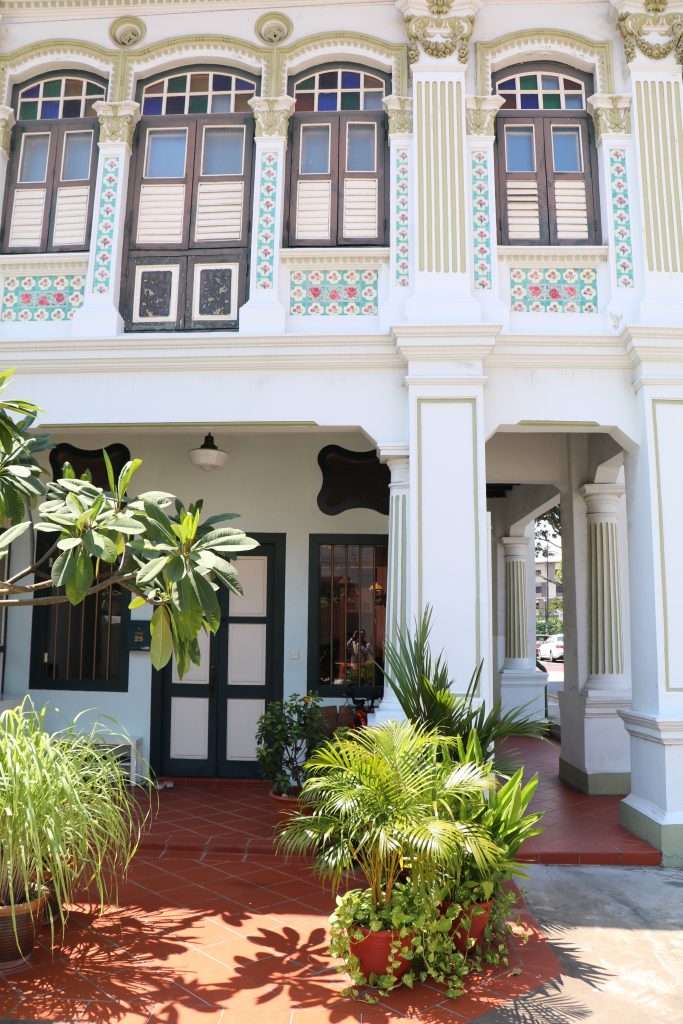Katong – The Pre-war Years
Traipsing around Katong, one should not miss Koon Seng Road’s bright, colourful shophouses which are rife in history and culture.

Colourful shophouses along Koon Seng Road
Katong aficionados are always smitten by its history, culture and Peranakan heritage. As far back as pre-war to the 1970s, there were also many Eurasian families that added more charm to the area’s je ne sais quoi. Truth be told, Koon Seng Road rightfully begins at the junction of Pennefather Road and Joo Chiat Road, plying all the way to the junction of Lorong J Telok Kurau and Still Road. This famous road was named after Cheong Koon Seng who was a wealthy businessman who lived from 1880 to 1932. Cheong’s roots are undoubtedly Straits-born, aka, Peranakan. He was the elder of two sons of Cheong Ann Bee who came from Malacca.

Koon Seng Road has a rich history and Peranakan culture
Presently, Koon Seng Road has become predominantly residential but, in its yesteryears, it was fecund with plenty of vibrant businesses and colourful shophouses displaying produce and goods for sale. In the 1970s, Peranakan culture was so thick such that families knew each other very well. Unbeknown to many people, the area was also home to a few dreaded triads such as Gang 18 and 36th Pai who operated notoriously. Many of these triad members kept weapons in these kampungs which also proved to be good hideouts from the police. Those who remembered the gang fights in the 1950s spoke about how they were only limited to themselves and not the lay people.

Each shophouse is unique in style
Today, walk down Koon Seng Road and you’ll appreciate the quietude and grace of this beloved neighbourhood. You can spot many architectural details on these conserved shophouses such as Peranakan tiles and iconic “pintu pagar” or half-length doors that help to provide ventilation while maintaining the privacy of the homeowners simultaneously. The entrance way cum patio is also lined with these chic Peranakan tiles that extend uniqueness; in fact, every home is decorated and painted differently. If your eyes peer further, you’ll also notice iron grilles and ventilation grilles on the façade of these shophouses. Ornamentation wise, there are also glazed ceramic tiles that channelled the Rococo and Chinoshire shophouse styles so tastefully.

In the heydays, many Peranakan families lived in this district
Since these were built from 1880 to 1932, these shophouses were dubbed “Late Shophouse Style”, often revered for its spectacular displays of eclectic architectural ornamentation such as decorative wall tiles, window framings, not forgetting, the iconic pilasters and columns that support the upper floors. The blending of cultural influences such as roof eaves (Malay) and decorative tiles (Peranakan) into each shophouse, injected a hybridised style to these shophouses, making them important to conserve their history and heritage.

There are many architectural details that dot each shophouse
So, if you happen to wander around Koon Seng Road, don’t forget to check out these row of shophouses that are worthy of an Instagram shot. If you’re lucky enough, you may spot a homeowner emerging from his/her own shophouse, perhaps ask him/her about how it’s like to live there and if they know of their building’s colourful past. Who knows, you might get invited inside to have a tea with the said homeowner and spend quality time talking about history and the good old days!

